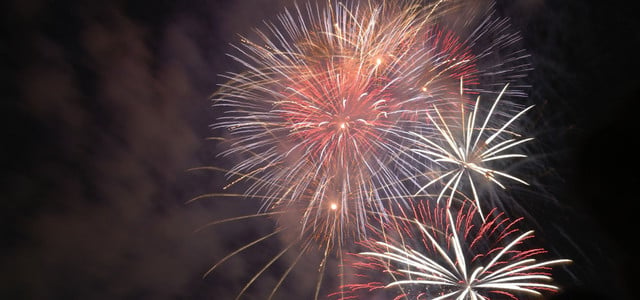
On New Year’s Eve, fine dust pollution in Germany goes through the roof. So how and when should you ventilate at the turn of the year? And is airing on New Year’s Day even recommended? The Federal Environment Agency gives tips.
Every year a spectacular fireworks display lights up the night sky to welcome the New Year. But as beautiful as the New Year’s Eve spectacle is, it also has its downsides. Because the fireworks release a lot of fine dust. The air quality therefore deteriorates dramatically at the turn of the year. Ventilating on New Year’s Day is therefore a delicate matter.
Why you shouldn’t ventilate immediately after the fireworks
According to the Federal Environment Agency (UBA), the burning of fireworks releases 2,050 tons of fine dust PM10 (smaller than 10 micrometers) every year, 1,700 tons of which belong to the even more harmful category PM2.5 (smaller than 2.5 micrometers). The largest part of it – around 75 percent – occurs on New Year’s Eve. The UBA warns against Utopia: “[Feinstaub-Partikel] do not sink to the ground immediately, but in many places lead to increased air pollution in the first hours of the New Year or into New Year’s Day.”
People with previous illnesses should be particularly careful. Inhaling high concentrations of fine dust can lead to health problems, such as respiratory problems and an increased need for medication in asthmatics. Even hospital stays due to respiratory or cardiovascular problems can increase at the turn of the year due to fine dust pollution, according to the UBA.
Ventilating on New Year’s Day: When is it safe to do so?
Measurements by the UBA show that particulate matter pollution usually drops back to normal levels around midday on New Year’s Day. However, this is only an average. According to the UBA, how long the fine dust concentration in the air remains elevated depends largely on the following factors:
-
Weather: Wind helps the fine dust particles move faster. When they mix with clean air, the pollution is distributed and the proportion of fine dust in the air we breathe decreases.
-
Amount of fireworks: The more fireworks are burned, the higher the concentration of fine dust in the air.
-
Local conditions: Particulate matter can be more concentrated in urban canyons or closed backyards than in open areas where the wind can blow through more easily.
So if you live in a windless area where there is an above-average amount of gunfire, the level of pollution may still be too high even at lunchtime. If you have pre-existing conditions, you should wait a little longer. The UBA’s air quality index, which is updated every hour (also available as an app), tells you what the air quality is like in your area – provided you live near one of the numerous measuring stations.
Airing on New Year’s Eve: You shouldn’t miss this opportunity
Precisely because the fine dust pollution is so high during and after the fireworks and ventilation is difficult on New Year’s Day, you should take advantage of the last remaining chance on New Year’s Eve. The UBA recommends ventilating thoroughly again before midnight. The windows should then remain closed for a long time to prevent the polluted air from entering the apartment.
Read more on Techzle\.com:
- Ventilating in snow: How useful is it?
- High humidity despite ventilation: what causes it and what helps?
- Fireworks on New Year’s Eve: 7 good reasons why you should avoid them
** marked with ** or orange underlined Links to sources of supply are partly partner links: If you buy here, you are actively supporting Techzle\.com, because we then receive a small part of the sales proceeds. More info.